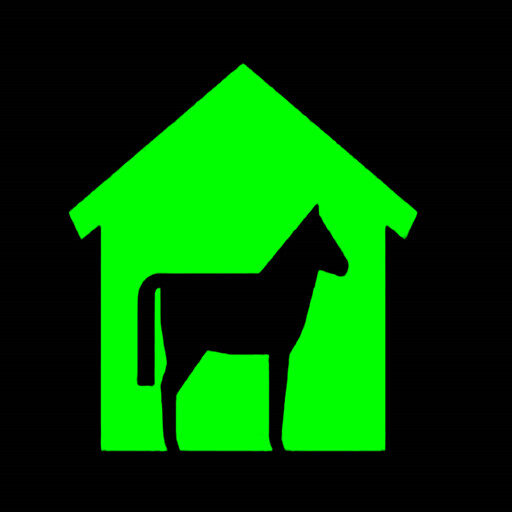
Transporting horses safely is not just a logistical necessity—it’s a delicate responsibility. I’m Frank Zhang, founder of DB Stable, and over my 15 years in the equine care industry, I’ve learned that a successful journey hinges on thorough preparation and attention to detail. From ensuring comprehensive pre-trip readiness and secure in-transit practices to meeting legal requirements and facilitating a smooth post-transport recovery, every step plays a critical role in protecting the well-being of our equine companions.
In this guide, I’ll share actionable strategies and insights to help you navigate the complexities of transporting horses. Whether you’re a horse owner or an equine transport provider, these best practices will empower you to make informed decisions and uphold the highest standards of safety and care. Let’s explore how to transform routine transport into a secure and comfortable experience for your horses.
Pre-Trip Readiness: Equipment & Safety Checks
When it comes to transporting horses, preparation is everything. Throughout my 15 years in the industry, I’ve learned that a successful journey begins long before the trailer leaves your property. Proper pre-trip readiness not only ensures your horse’s physical safety but also significantly reduces their stress during travel.
The Foundation of Horse Transportation Safety
Every successful equine journey starts with thorough preparation. Horse transportation safety begins with a detailed inspection of your transportation equipment and an understanding of your horse’s specific needs during travel.
Essential Equipment Inspection
Before loading your horse, inspect these critical components:
| Equipment Component | What to Check | Common Issues |
|---|---|---|
| Trailer Floor | Structural integrity, no rot or weak spots | Water damage, worn rubber mats |
| Braking System | Functionality, responsiveness | Worn brake pads, fluid leaks |
| Tires | Pressure, tread depth, sidewall condition | Uneven wear, aging cracks |
| Lights & Signals | All lights functioning properly | Broken bulbs, faulty connections |
| Ventilation System | Clear airflow, functioning fans | Blocked vents, inoperable fans |
For those wondering how to transport horses safely across states, remember that longer journeys require more thorough preparations and potentially different equipment configurations for varying climate zones.
Vehicle Customization for Equine Transport
Your trailer’s interior significantly impacts your horse’s comfort and safety. Implementing safe horse transport practices means customizing your trailer to meet your horse’s specific needs.
Specialized Trailer Features
Consider these modifications to enhance safety and comfort:
- Non-slip flooring with proper drainage
- Padded walls and breast bars to prevent injuries
- Adjustable partition systems for different sized horses
- Cross-tie configurations that allow natural balance
- Temperature monitoring systems for climate control
At DB Stable, we’ve developed specialized cushioning systems that can be retrofitted to existing trailers, providing additional protection during sudden stops or turns.
Safety Gear and Accessories Checklist
When transporting horses, having the right accessories can make a significant difference in both safety and stress levels. Always keep these essentials readily available:
DB Stable Solutions for Enhanced Safety
Through years of experience and client feedback, we’ve developed solutions specifically designed to address common transportation challenges:
- Quick-release head bumpers to protect against concussions
- Transportable stall padding systems for overnight stops
- Emergency bridle and lead rope kits for unexpected situations
- Specialized leg wraps designed to prevent trailer injuries
- Climate-control blankets for temperature regulation
Mental Preparation for Your Horse
One often overlooked aspect of transportation is your horse’s mental well-being. Stress reduction techniques should be part of your pre-trip routine:
Creating a Comfortable Environment
Consider these strategies to reduce your horse’s anxiety:
- Familiarize your horse with the trailer through short practice sessions
- Maintain familiar feeding schedules before departure
- Use calming supplements when appropriate (consult your veterinarian)
- Install our DB Stable comfort padding with familiar scents
- Consider traveling with a companion horse for social support
Remember that your confidence and calmness directly influence your horse’s emotional state during transport.

In-Transit Excellence: Secure Loading and Comfort
After ensuring your equipment is ready, the next critical phase of transporting horses is the loading process and maintaining their comfort during transit. Throughout my years working with ranch owners across 55 countries, I’ve discovered that this phase often determines the success of the entire journey.
Secure Loading Techniques
Loading is perhaps the most stressful part of travel for many horses. Implementing safe horse transport practices during this critical moment can prevent injuries and reduce anxiety.
Loading Methods for Different Temperaments
Each horse has a unique personality that requires a specific approach:
| Horse Temperament | Recommended Loading Technique | Common Mistakes to Avoid |
|---|---|---|
| Anxious/Nervous | Gradual approach with positive reinforcement | Rushing or using excessive force |
| Stubborn/Resistant | Patience with consistent pressure-release cues | Escalating pressure too quickly |
| Experienced/Calm | Direct approach with familiar commands | Becoming complacent about safety procedures |
| Young/Inexperienced | Buddy system with an experienced horse | Expecting immediate compliance |
| Dominant/Aggressive | Clear leadership with adequate space | Placing near other horses that may trigger reactions |
Following these transport horses guidelines can significantly improve your loading success rate while minimizing stress for both you and your horse.
Environmental Monitoring During Transit
One of the best practices for equine transport is maintaining optimal environmental conditions throughout the journey. Temperature fluctuations, poor ventilation, and excessive vibration can dramatically increase stress levels.
Climate Control Essentials
Modern technology offers excellent solutions for monitoring and controlling your horse’s environment:
- Temperature monitoring systems with mobile alerts
- Adjustable ventilation panels for different weather conditions
- Specialized insulation systems for extreme climates
- Vibration dampening flooring to reduce fatigue
- Air filtration for dust reduction on long journeys
Proper Restraint and Spacing
When transporting horses, the configuration inside your trailer significantly impacts safety and comfort. The balance between secure restraint and comfortable positioning is crucial.
Creating the Optimal Transport Environment
Our experience at DB Stable has shown these restraint principles to be most effective:
- Allow horses to maintain their natural balance with heads relatively free
- Use cross-ties that permit limited movement without excessive restriction
- Ensure dividers provide adequate personal space while preventing horses from turning
- Position similar-temperament horses together when transporting multiple animals
- Consider rear-facing positions for horses that struggle with traditional transport
Portable Stabling Solutions for Enhanced Comfort
For journeys requiring stops or overnight accommodations, portable stabling options can make a significant difference in your horse’s comfort and recovery.
DB Stable’s Transport-Friendly Products
Our specialized portable solutions have been designed specifically for transport scenarios:
- Quick-assembly portable stall systems for overnight rest periods
- Modular tack and feed storage that integrates with transport vehicles
- Specialized comfort matting that reduces leg fatigue during extended standing
- Portable water and feeding systems that maintain familiar routines
- Adjustable privacy screens to reduce visual stimulation in busy environments
These innovations have proven particularly valuable for competition horses who must perform shortly after arrival, as they significantly enhance recovery during transit.

Legal Clarity: Documentation and Compliance
The legal aspects of transporting horses often create confusion for owners and handlers. Throughout my experience working with clients across multiple countries, I’ve found that understanding documentation requirements is just as crucial as proper equipment when ensuring a smooth journey.
Essential Legal Documents for Horse Transit
Documentation requirements vary by location, but certain papers are universally necessary when crossing state lines or international boundaries. Preparing these in advance prevents delays and potential legal complications.
Document Checklist for Different Transport Scenarios
| Document Type | Required For | Validity Period | Special Considerations |
|---|---|---|---|
| Coggins Test (EIA) | Interstate travel | 6-12 months (varies by state) | Must be original or certified copy |
| Health Certificate | Interstate/International | 10-30 days (destination dependent) | Must be issued by accredited veterinarian |
| Brand Inspection | Specific states (Western US) | Varies by state | Required in 17 western states |
| Ownership Proof | All transport | N/A | Bill of sale, registration papers |
| Import/Export Permits | International travel | Varies by country | Often requires embassy authentication |
When following guidelines for transporting horses long distance, I recommend creating a documentation folder for each horse, with both physical and digital copies readily accessible.
Interstate Transport Regulations Overview
One of the most challenging aspects of horse transportation safety is navigating the varying requirements across different states. Requirements that are optional in one state may be mandatory in another.
Regional Regulatory Differences
Understanding these regional variations can prevent costly delays:
- Eastern states typically focus on Coggins testing and health certification
- Western states often require brand inspections and ownership verification
- Border states have additional requirements for crossing international boundaries
- Some states require entry permits or prior notification before arrival
- Quarantine requirements may apply when coming from certain regions
Maintaining Compliance During Transport
Following transport horses guidelines means staying compliant not just at departure and arrival, but throughout the journey. When transporting horses across multiple jurisdictions, requirements can change as you cross borders.
Digital Solutions for Documentation Management
Technology has significantly simplified compliance tracking:
- GPS-enabled compliance apps that alert you to approaching state requirements
- Digital document vaults for immediate access to all certificates
- Automated expiration notifications for time-sensitive documents
- Real-time regulatory update services for last-minute requirement changes
- DB Stable’s documentation portfolio system for organized record-keeping
Legal Resources and Advisory Contacts
Even experienced transporters occasionally need expert guidance on complex regulatory issues, especially when dealing with unusual circumstances or international transport.
Industry Partnerships for Simplified Compliance
At DB Stable, we’ve established relationships with regulatory experts to assist our clients:
- Partner veterinarians who understand interstate health requirements
- Legal advisors specializing in equine transport regulations
- Former agricultural inspectors who provide compliance training
- International shipping specialists for overseas transport
- State-specific contacts for clarification on regional requirements
These partnerships have proven invaluable for our clients navigating the complex regulatory landscape, especially those participating in international competitions or relocating breeding stock across borders.

Post-Transport Recovery: Managing Stress and Ensuring Care
The journey doesn’t end when your horse steps off the trailer. In my experience with transporting horses across 55 countries, I’ve observed that the recovery period is just as critical as the transport itself. How you manage the first 24-48 hours after arrival can significantly impact your horse’s health, performance, and mental well-being.
Recognizing Signs of Transport Stress in Horses
Implementing safe horse transport practices includes knowing how to identify when your horse is experiencing post-transport stress. Early recognition allows for prompt intervention and prevents escalation of issues.
Physical vs. Behavioral Stress Indicators
| Stress Category | Warning Signs | Severity Level | Recommended Response |
|---|---|---|---|
| Physical: Immediate | Elevated heart rate, sweating, trembling | Moderate to High | Immediate cooling, hydration, quiet environment |
| Physical: Delayed | Reduced appetite, stiffness, mild colic | Moderate | Veterinary assessment, gentle walking, careful monitoring |
| Behavioral: Immediate | Heightened alertness, pacing, vocalization | Low to Moderate | Quiet familiar environment, companion animals if possible |
| Behavioral: Delayed | Lethargy, aggression, unusual habits | Moderate to High | Veterinary consultation, adjusted turnout schedule |
| Respiratory | Increased respiratory rate, nasal discharge | High | Immediate veterinary attention, dust-free environment |
Immediate Post-Transport Care Protocols
The first hours after arrival are crucial for assessing horse transportation safety outcomes. Our research with transport professionals has identified these essential steps:
The First 24 Hours: Critical Care Timeline
- Immediate (0-1 hour): Check vital signs, offer small amounts of water, perform visual examination
- Early (1-4 hours): Supervised walking to assess movement, small hay portions, continued hydration
- Mid-range (4-12 hours): Introduce familiar feed, monitor manure output, check for leg filling
- Extended (12-24 hours): Gradual return to normal feeding schedule, limited turnout if appropriate
- Follow-up (24+ hours): Complete physical assessment, adjusted exercise plan
Practical Anxiety Reduction Strategies
Following best practices for equine transport means implementing strategies that specifically address post-transport anxiety. These techniques have proven particularly effective:
DB Stable’s Approach to Recovery Environment
Through our work with competitive sport horses and breeding operations, we’ve developed specialized recovery protocols:
- Arrival stall preparation with familiar bedding and scents
- Strategic placement of companions within visual contact
- Customized lighting and acoustic environment management
- Specialized cooling or warming stall accessories based on climate transition
- Gradual reintroduction to herd or training routines
Long-Term Recovery and Monitoring
Experienced handlers know that some effects of transporting horses may not manifest immediately. Establishing a monitoring protocol for the first week post-transport is essential.
When to Seek Veterinary Intervention
While minor stress reactions are normal, certain symptoms warrant immediate professional attention:
- Persistent elevated temperature beyond 24 hours
- Refusal to eat or drink for more than 8-12 hours
- Significant swelling in limbs that doesn’t respond to walking
- Any signs of respiratory distress or neurological abnormalities
- Prolonged lethargy or unusual behavior beyond 48 hours
At DB Stable, we’ve found that integrating specialized recovery stalling solutions significantly reduces recovery time and stress-related complications after transport, particularly for competition horses who need to perform soon after arrival.

Conclusion
As I reflect on the insights shared in this article on Horse Transportation Solutions, it is clear that meticulous planning, proper equipment checks, and tailored transport practices are essential to ensuring a safe journey for our equine companions. Thorough pre-trip readiness, secure loading, and consistent in-transit care form the backbone of effective horse transportation safety, reducing stress and enhancing overall well-being.
Drawing from my 15 years of industry experience, I am confident that adopting these best practices not only safeguards your horse’s physical condition but also supports its mental comfort during travel. At DB Stable, our innovative solutions and commitment to quality ensure that every journey is well-planned and executed with precision. I encourage fellow horse owners and transport providers to integrate these strategies into their routines, making every trip a secure and rewarding experience. Trust in our expertise to transform routine transport into a safe, stress-free, and comfortable venture.
External Links
- Transport and Care of Horses – Animal Welfare | Extension
- A History of Transporting Horses – Museum of the Horse
- Transport and care of horses – Agriculture Victoria
- Transporting Horses – Inspection Canada
- Keeping Horses: Transporting Horses – GOV.UK
- Considerations When Hauling a Horse | Extension Horses
- Transporting horses in horseboxes and trailers – GOV.UK
- Air Horse One: The Wonderful World of Equine Air Travel | CNN




